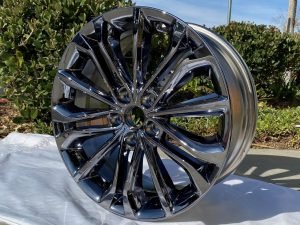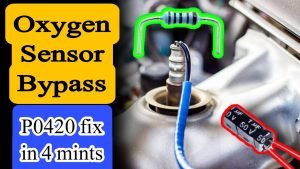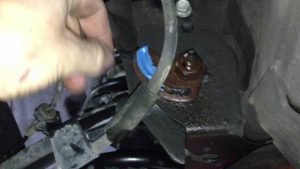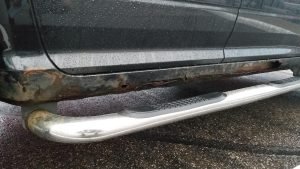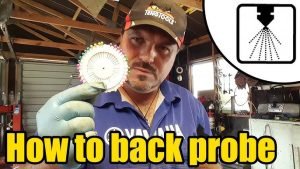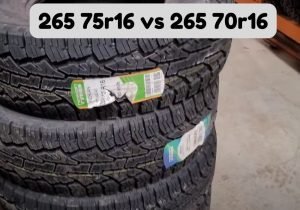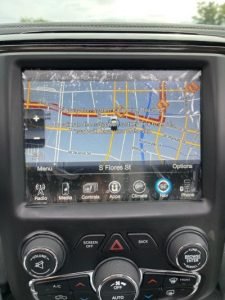How Much Does It Cost to Replace a Fuel Pump? A Comprehensive Guide
A failing fuel pump can leave you stranded, so understanding the cost of replacement is crucial. This guide breaks down the expense, providing you with the information you need to budget effectively and make informed decisions. Remember, prices vary widely based on your vehicle’s make, model, and year, as well as your location and the chosen repair shop.
Understanding the Costs Involved
The total cost of replacing a fuel pump isn’t just about the part itself. It’s a combination of several factors:
- Part Cost: The fuel pump itself can range significantly in price. Generic aftermarket pumps are generally cheaper than Original Equipment Manufacturer (OEM) parts. OEM parts are usually preferred for their reliability, but the higher initial cost is a consideration.
- Labor Costs: This is often the largest part of the bill. The complexity of accessing the fuel pump varies dramatically between vehicles. Some require simple access under the rear seat, while others necessitate dropping the fuel tank, a much more time-consuming process. Labor rates also differ regionally and between repair shops.
- Other Potential Costs: Sometimes, additional repairs might be needed. This could include replacing fuel lines, fuel filters, or even the fuel tank itself if there’s damage discovered during the process. Unexpected repairs will naturally increase the overall expense.
Estimating the Total Cost
Giving a precise figure is impossible without knowing your specific vehicle. However, here’s a general range:
- Lower End (easier access): $300 – $700. This typically covers vehicles where the pump is relatively accessible.
- Mid-Range (moderate access): $700 – $1500. This accounts for more complex access requiring some disassembly.
- Higher End (difficult access): $1500 and above. This price reflects vehicles requiring significant work, such as dropping the fuel tank.
Always get multiple quotes from reputable mechanics before proceeding with repairs. This allows you to compare prices and ensure you’re getting a fair deal.
Step-by-Step Process (General Overview – Consult Your Vehicle’s Manual)
Disclaimer: This is a generalized overview and should not be considered a comprehensive repair guide. Improperly handling fuel systems is dangerous. Always consult your vehicle’s repair manual and/or a qualified mechanic for specific instructions.
The general steps usually involve:
- Disconnecting the Battery: This is a crucial safety precaution to prevent electrical shocks.
- Accessing the Fuel Pump: This is the most variable step, depending on your vehicle’s design. It may involve removing seats, underbody panels, or even dropping the fuel tank.
- Removing the Old Fuel Pump: This often requires disconnecting fuel lines and electrical connectors. Be meticulous in noting the connections to ensure proper reassembly.
- Installing the New Fuel Pump: This is the reverse of removal, ensuring all connections are secure.
- Reassembling Everything: This involves reinstalling all removed components and securing them properly.
- Testing the System: This is crucial to ensure the new pump is working correctly and there are no leaks.
Tips for Saving Money
- Shop Around for Parts: Compare prices from different auto parts stores.
- Consider DIY if you’re mechanically inclined: However, only attempt this if you have the necessary experience and tools. Incorrect installation can be dangerous.
- Maintain Your Fuel System: Regularly changing the fuel filter can extend the life of your fuel pump.
Common Mistakes to Avoid
- Ignoring Warning Signs: Don’t ignore symptoms like a sputtering engine, difficulty starting, or loss of power. Early intervention can often prevent more costly repairs.
- Using Incorrect Parts: Always ensure you are using the correct fuel pump for your vehicle’s make, model, and year.
- Not Properly Securing Connections: Loose connections can lead to leaks and further problems.
- Failing to Test the System After Installation: Always test the system thoroughly to ensure everything is working correctly.
Replacing a fuel pump can be an expensive repair. By understanding the factors influencing the cost and following these tips, you can be better prepared and make more informed decisions about your vehicle’s maintenance. Remember to prioritize safety and seek professional help if you lack the experience to handle this type of repair yourself.
FAQ
Q. How much does it typically cost to replace a fuel pump?
A. The cost to replace a fuel pump varies significantly depending on several factors, including the make and model of your vehicle, the labor rates in your area, and whether any additional repairs are needed. You can expect to pay anywhere from $300 to $1000 or more. The fuel pump itself might cost between $100 and $500, while labor can range from $100 to $500 or more, depending on accessibility. High-performance or luxury vehicles will likely be on the higher end of this range.
Q. What factors influence the cost of fuel pump replacement?
A. Several factors affect the final cost. The type of vehicle (luxury vehicles are typically more expensive to repair), the location of the fuel pump (in-tank pumps are generally more complex to replace than external pumps), the labor rates charged by the mechanic, whether additional parts are required (like fuel lines or filters), and any unforeseen complications during the repair can all influence the price.
Q. Can I replace the fuel pump myself?
A. While technically possible for some individuals with mechanical experience, replacing a fuel pump is generally not recommended for DIYers. It’s a complex job requiring specialized tools and knowledge of fuel system safety procedures. Incorrect installation can lead to significant damage to your vehicle or even create a fire hazard. It’s often best to leave this task to a qualified mechanic.
Q. What are the signs that my fuel pump needs replacing?
A. Several symptoms indicate a failing fuel pump. These include difficulty starting the engine, a sputtering or erratic engine performance, loss of power or acceleration, a whining noise from the fuel tank area when the ignition is turned on, and a consistent fuel starvation problem (the engine running fine until it’s low on gas).
Q. Is it covered under warranty?
A. Whether your fuel pump replacement is covered under warranty depends on several factors including the age of your vehicle, its mileage, the terms of your warranty (if you have an extended warranty), and whether the pump failure is due to a manufacturing defect or normal wear and tear. Check your warranty documentation for specifics. Generally, fuel pumps failing due to normal wear and tear after the manufacturer’s warranty expires are not covered.
Q. How long does a fuel pump replacement typically take?
A. The time required to replace a fuel pump depends on the vehicle’s make and model and the mechanic’s experience. It can range from a few hours to a full day or more. Some vehicles have easier fuel pump access than others; in-tank pumps are generally more time-consuming to replace than external pumps.
Related Articles
How Much Does a Fuel Pump Cost
How Much Does a Fuel Pump Cost? A Comprehensive Guide Replacing a fuel pump is a significant car repair, and understanding the cost is crucial for bud…
DIY Brake Pad Replacement: A Step-by-Step Guide for Beginners
DIY Brake Pad Replacement: A Step-by-Step Guide for Beginners Recommended Product: Do-It-Yourself Car Repair And Maintenance Bible For Beginners: A Ha…
How to Clean a Car Air Conditioner Filter
How to Clean Your Car’s Air Conditioner Filter: A Breath of Fresh Air Is your car’s AC blowing warm air, smelling musty, or just not perfo…
Affiliate Disclosure: As an Amazon Associate, I earn from qualifying purchases made through links on this site.

